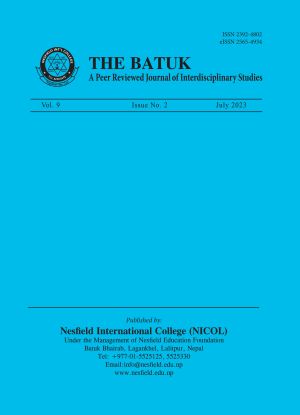Financial Inclusion through FinTech Innovation: Predicting User Acceptance of Digital Wallet
DOI:
https://doi.org/10.3126/batuk.v9i2.57026Keywords:
financial inclusion, FinTech, digital wallet, innovation, digital financeAbstract
Conceptualizing the theme that a person is more likely to be left out of the financial system, the poorer and more disadvantaged they are, because the financial service sector functions in a way that benefits the socially powerful. This study is carried out to understand the factors influencing adoption of digital wallet and to examine the impact of digital wallet adoption on financial inclusion. Two established models of technology adoption; Technology Acceptance Model (TAM) and Unified Theory of Acceptance and Use of Technology (UTAUT), are used to conduct the study. The customers of Kathmandu valley were surveyed in terms of their attitudes, perceptions, and behaviors. The results showed that Perceived Usefulness, Price Value and Trust had a significant impact on the adoption of digital wallet. However, Perceived Ease of Use and Social Influence do not significantly impact the adoption. The study concludes that digital wallets have the potential to promote greater financial inclusion among disadvantaged and low-income individuals by addressing barriers to financial inclusion. The results provide insights for policymakers and FinTech companies in designing and implementing effective digital wallet so as to promote greater financial inclusion.
Downloads
Downloads
Published
How to Cite
Issue
Section
License
Copyright (c) 2023 Nesfield International College

This work is licensed under a Creative Commons Attribution-NonCommercial 4.0 International License.
This license enables reusers to distribute, remix, adapt, and build upon the material in any medium or format for noncommercial purposes only, and only so long as attribution is given to the creator.




